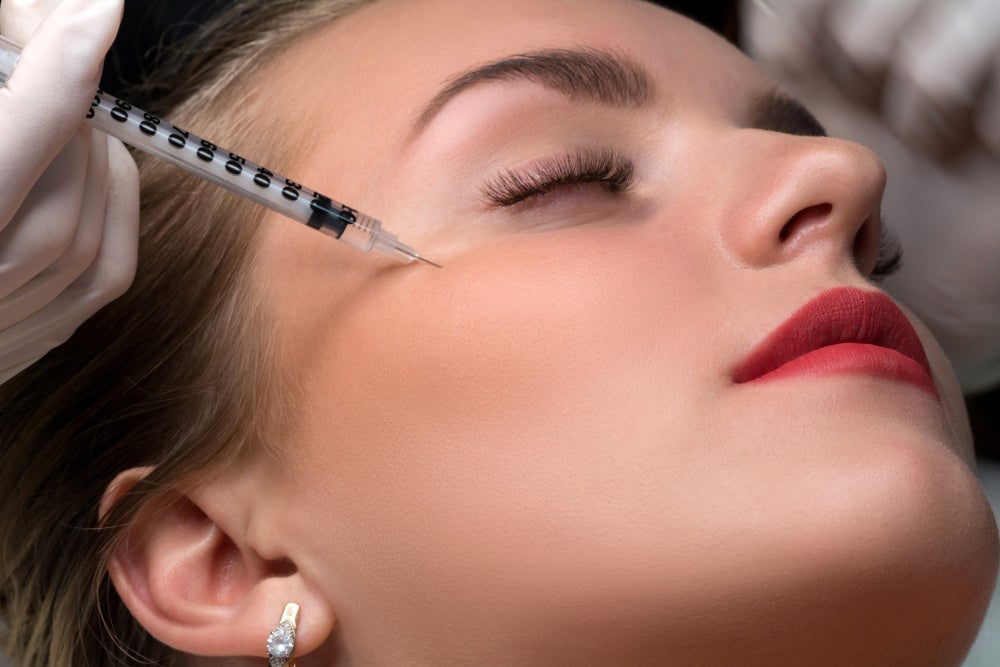Under-eye fillers have gained immense popularity in recent years as an effective solution to rejuvenate tired-looking eyes. With the rise of "under eye fillers in Dubai," (الحشوات تحت العين في دبي) many people are looking for non-invasive treatments to address common concerns such as dark circles, puffiness, and volume loss in the under-eye area. While under-eye fillers are a highly effective option, it's important to understand how they compare to other anti-aging treatments available today. By examining various treatments, individuals can make an informed decision about the best approach for their unique needs.
The Basics of Under Eye Fillers:
Under-eye fillers are a non-surgical solution designed to restore volume, reduce puffiness, and smooth out fine lines under the eyes. These treatments primarily use hyaluronic acid-based fillers, which mimic the body's natural substances to plump the skin and rejuvenate the under-eye area. Fillers are injected directly into the skin and offer immediate results with minimal downtime. The effects typically last between 6 to 12 months, depending on the filler used and the individual's skin condition.

Botox vs. Under Eye Fillers:
Botox, another popular anti-aging treatment, works by temporarily relaxing the muscles beneath the skin, which helps smooth out wrinkles and prevent new lines from forming. While Botox is highly effective for treating crow’s feet and forehead lines, it doesn’t address volume loss in the under-eye area, which is a common concern for many individuals. Under eye fillers, on the other hand, specifically target volume loss and hollowness, offering a more comprehensive solution for under-eye rejuvenation. Botox and fillers can actually be used together, where Botox targets wrinkles and fillers restore volume, delivering a more youthful and refreshed appearance.
Laser Treatments vs. Under Eye Fillers:
Laser treatments are another popular option for treating under-eye concerns, including dark circles, fine lines, and skin texture. Laser therapies work by stimulating collagen production and improving skin tone. While effective, laser treatments generally require multiple sessions to achieve noticeable results, and the downtime can be longer than with under-eye fillers. In contrast, under-eye fillers provide immediate results after just one session, with minimal downtime. However, laser treatments can be more effective for improving skin texture and stimulating collagen production, which can complement the effects of under-eye fillers.
Chemical Peels vs. Under Eye Fillers:
Chemical peels involve the application of a chemical solution to exfoliate and remove dead skin cells, helping to improve skin tone and texture. They can be effective in treating under-eye skin discoloration and fine lines. However, chemical peels primarily target the surface layer of the skin and do not address volume loss, which is a key issue under the eyes. Under eye fillers (الحشوات تحت العين), however, focus on restoring lost volume in the deeper layers of the skin, making them a more targeted solution for hollow or sunken under-eye areas. Depending on your needs, chemical peels and fillers can complement each other, enhancing overall skin health and appearance.
Microneedling vs. Under Eye Fillers:
Microneedling is a procedure that uses tiny needles to create micro-injuries in the skin, stimulating collagen production and improving skin texture and elasticity. While microneedling is effective in reducing fine lines and improving skin quality around the eyes, it does not directly address volume loss or puffiness under the eyes. Under eye fillers, on the other hand, are specifically designed to fill in hollows and restore volume, providing more targeted and immediate results. However, microneedling can enhance the overall skin texture, making it a complementary treatment to fillers for those seeking comprehensive rejuvenation.
Platelet-Rich Plasma (PRP) vs. Under Eye Fillers:
PRP therapy, also known as the "vampire facial," uses a patient’s own blood to promote healing and stimulate collagen production. While PRP is an effective way to improve skin texture and tone, it works more slowly than under-eye fillers. The results of PRP take several weeks to become visible, and the treatment may require multiple sessions for optimal results. In contrast, under-eye fillers offer immediate and long-lasting improvements to volume and the overall appearance of the under-eye area. Both treatments can work together to improve skin health and rejuvenation, with PRP enhancing skin texture and fillers providing volume restoration.
Surgical Options vs. Under Eye Fillers:
For individuals seeking more permanent results, surgical options such as lower eyelid blepharoplasty (eyelid surgery) may be considered. This surgery involves removing excess skin and fat from the under-eye area and can provide long-lasting improvements. However, it is more invasive, requires a longer recovery time, and carries the risks associated with surgery. Under eye fillers, in comparison, are a minimally invasive, quick procedure that provides noticeable results without the need for a lengthy recovery process. While fillers are not permanent, they offer a non-surgical alternative for those looking to rejuvenate the under-eye area with less risk and downtime.
Conclusion:
When considering anti-aging treatments for the under-eye area, it's essential to weigh the pros and cons of each option. While under-eye fillers provide immediate, effective solutions for volume loss and puffiness, treatments like Botox, laser therapies, chemical peels, and microneedling each offer unique benefits depending on your specific concerns. If you are looking for targeted rejuvenation of the under-eye area, "under eye fillers in Dubai" can be an excellent choice due to their ability to restore volume and smooth out wrinkles. For comprehensive results, a combination of treatments may be the most effective way to achieve a refreshed, youthful appearance.

